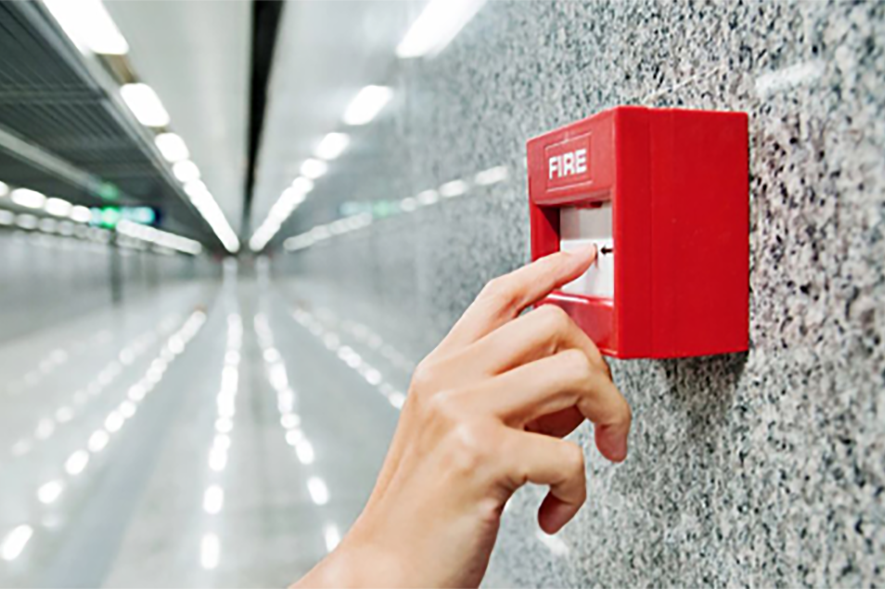
Fire Protection
Firefighting:
A firefighting system, also known as a fire suppression system, is
a collection of devices, equipment, and techniques designed to detect, control,
and extinguish fires. These systems protect lives, property, and the environment
in various settings, including residential, commercial, industrial, and public
spaces.
Here are some common components and types
of firefighting systems:
·
Fire Alarm Systems:
These systems use smoke detectors, heat detectors, or flame detectors to sense
the presence of fire and trigger an alarm. The alarms can be audible, visual,
or transmitted to a central monitoring station.
·
Fire Sprinkler
Systems: Sprinkler systems are one of the most effective fire suppression
methods. They consist of a network of pipes with sprinkler heads strategically
placed throughout a building. When a specific temperature is reached,
individual sprinkler heads activate and release water to control or extinguish
the fire.
·
Fire Suppression
Systems: These systems use various extinguishing agents, such as water mist,
foam, gas, or chemicals, to suppress fires. They are typically found where
water-based systems may cause damage, such as server rooms, electrical
equipment rooms, or archives.
·
Fire Extinguishers:
Portable fire extinguishers are essential firefighting tools that can be easily
operated by individuals. They contain specific extinguishing agents suitable
for different types of fires, such as water, foam, carbon dioxide (CO2), dry
chemical powder, or wet chemical.
·
Fire Hydrant
Systems: Hydrant systems are installed in outdoor areas, primarily for
firefighting operations by the fire department. They consist of water supply
lines, hydrant valves, and hoses to deliver large volumes of water to
extinguish fires.
·
Fire Suppression
Foam Systems: Foam systems are used for combating flammable liquid fires, such
as fuel spills or fires involving oil-based products. The foam blankets the surface
of the liquid, cutting off the oxygen supply and preventing reignition.
·
Gas-based Fire Suppression
Systems: These systems use gases, such as carbon dioxide (CO2), inert gases
(like nitrogen or argon), or clean agents (such as FM-200 or Novec 1230), to
displace oxygen and suppress fires. They are commonly used in areas with
sensitive equipment or where water damage is a concern.
It's important to note that the specific firefighting system used
depends on the nature of the building, fire hazards present, local regulations,
and the specific requirements of the facility. Fire safety codes and standards
dictate the design, installation, and maintenance of these systems to ensure
their effectiveness and compliance with safety regulations.
Fire alarm:
A fire alarm system is a crucial component of fire safety in
buildings and is designed to detect the presence of fire and alert occupants to
evacuate and summon emergency responders. It consists of various interconnected
devices that work together to detect and signal the presence of fire or smoke.
Here are the key components of a typical
fire alarm system:
·
Smoke Detectors:
Smoke detectors are devices that sense the presence of smoke particles in the
air. They can use different technologies such as ionization, photoelectric, or
combination detectors to detect smoke. When smoke is detected, the detectors
trigger an alarm signal.
·
Heat Detectors: Heat
detectors are designed to detect rapid increases in temperature or high
temperatures in an area. They are commonly used in areas where smoke detectors
may not be suitable, such as kitchens or garages. Heat detectors can be
classified as fixed-temperature detectors (activate at a specific temperature)
or rate-of-rise detectors (activate if the temperature rises rapidly).
·
Flame Detectors:
Flame detectors are specialized devices that detect the presence of flames by
sensing their characteristic infrared or ultraviolet radiation. They are
typically used in areas where fast flame detection is critical, such as areas
with flammable liquids or gases.
·
Manual Call Points:
These are manual alarm activation devices that allow individuals to manually
initiate an alarm in case of fire or emergency. Manual call points are usually
located near exits or in easily accessible areas to ensure prompt activation in
case of an emergency.
·
Control Panel: The
control panel is the central processing unit of the fire alarm system. It
receives information from the various detectors and devices, monitors their
status, and initiates appropriate responses. The control panel also activates
alarm notification devices, such as sounders or strobe lights, to alert
occupants of the building.
·
Notification
Devices: These devices are responsible for alerting occupants of the building
when a fire alarm is triggered. They can include audible alarms (sirens, horns,
or bells) and visual alarms (strobe lights or flashing lights) to ensure that
individuals with hearing impairments can also receive the warning.
·
Monitoring System:
Fire alarm systems in larger buildings or complexes may have a monitoring
system that connects the fire alarm system to a central monitoring station.
This allows for 24/7 monitoring of the system, and in case of an alarm, the
monitoring station can notify emergency responders.
It's essential to regularly test and maintain fire alarm systems to
ensure their proper functioning. Routine inspections, maintenance, and
adherence to fire safety codes and regulations are critical to keeping the
system operational and ensuring the safety of occupants in the event of a fire.
